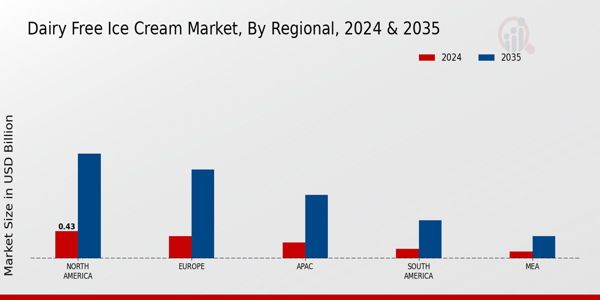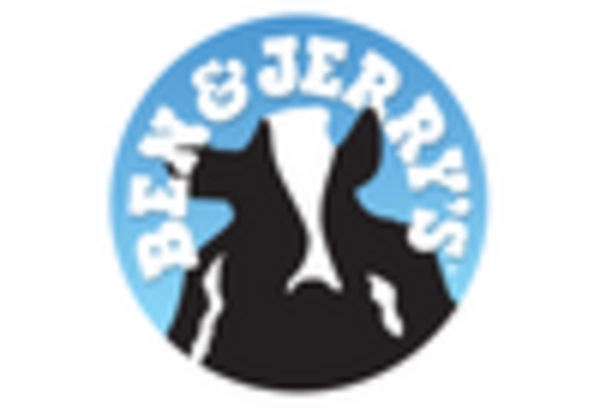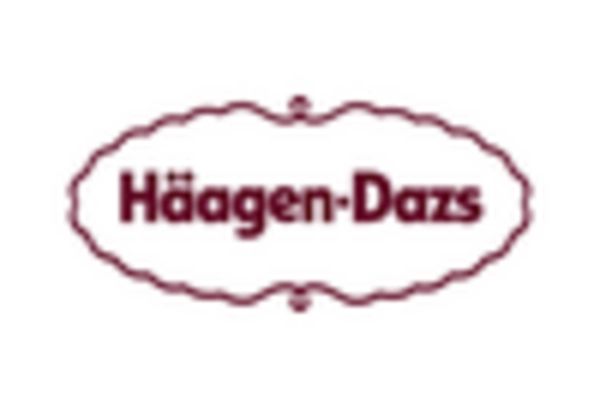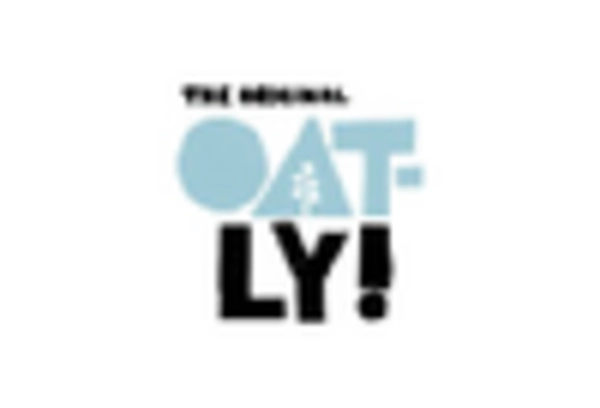Flavor Innovation
Flavor innovation plays a pivotal role in driving the Dairy Free Ice Cream Market forward. As competition intensifies, brands are compelled to differentiate themselves through unique and exciting flavors. This trend is particularly evident as consumers seek novel taste experiences that go beyond traditional offerings. The Dairy Free Ice Cream Market has seen an influx of creative flavor combinations, such as matcha green tea, lavender, and exotic fruit blends. Market data indicates that innovative flavors can significantly boost sales, with some brands reporting a 15% increase in revenue attributed to new product launches. This focus on flavor diversity not only attracts new customers but also retains existing ones, thereby fostering brand loyalty.
Dietary Restrictions
The rise in dietary restrictions among consumers is a significant driver for the Dairy Free Ice Cream Market. With an increasing number of individuals diagnosed with lactose intolerance or dairy allergies, the demand for dairy-free alternatives has surged. This trend is further amplified by the growing awareness of food sensitivities and the desire for inclusive food options. The Dairy Free Ice Cream Market is responding to this demand by offering a wide range of products that cater to various dietary needs. Recent statistics indicate that approximately 65% of the global population has some degree of lactose intolerance, underscoring the potential for growth in this market segment. As more consumers seek out dairy-free options, the Dairy Free Ice Cream Market is likely to expand its offerings to meet these needs.
Health Consciousness
The increasing awareness of health and wellness among consumers appears to be a primary driver for the Dairy Free Ice Cream Market. As individuals become more health-conscious, they seek alternatives to traditional dairy products, which are often perceived as high in calories and saturated fats. This shift in consumer behavior has led to a rise in demand for dairy-free options that are lower in calories and free from lactose. According to recent data, the dairy-free ice cream segment has experienced a growth rate of approximately 10% annually, indicating a robust market potential. Furthermore, the Dairy Free Ice Cream Market is likely to benefit from the growing trend of plant-based diets, as more consumers opt for vegan and vegetarian lifestyles.
Sustainability Focus
Sustainability has emerged as a crucial factor influencing consumer choices, particularly in the Dairy Free Ice Cream Market. As environmental concerns escalate, consumers are increasingly inclined to support brands that prioritize eco-friendly practices. This includes sourcing ingredients from sustainable farms and utilizing environmentally friendly packaging. The Dairy Free Ice Cream Market is witnessing a notable shift, with many companies adopting sustainable practices to appeal to eco-conscious consumers. Data suggests that brands emphasizing sustainability can command a premium price, thereby enhancing their market share. This trend indicates that the Dairy Free Ice Cream Market may continue to expand as consumers align their purchasing decisions with their values regarding environmental stewardship.
Convenience and Accessibility
Convenience and accessibility are increasingly influencing consumer purchasing decisions within the Dairy Free Ice Cream Market. As busy lifestyles become the norm, consumers are seeking products that are easy to find and quick to consume. This trend has led to the proliferation of dairy-free ice cream options in supermarkets, convenience stores, and online platforms. The Dairy Free Ice Cream Market is adapting to this demand by enhancing distribution channels and ensuring that products are readily available to consumers. Market analysis indicates that the availability of dairy-free options in mainstream retail outlets has contributed to a 20% increase in sales over the past year. This focus on convenience not only attracts new customers but also encourages repeat purchases, thereby solidifying the Dairy Free Ice Cream Market's position in the competitive landscape.


















Leave a Comment